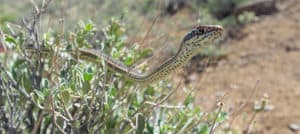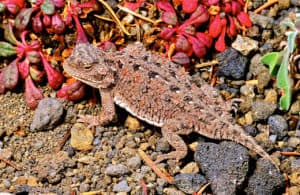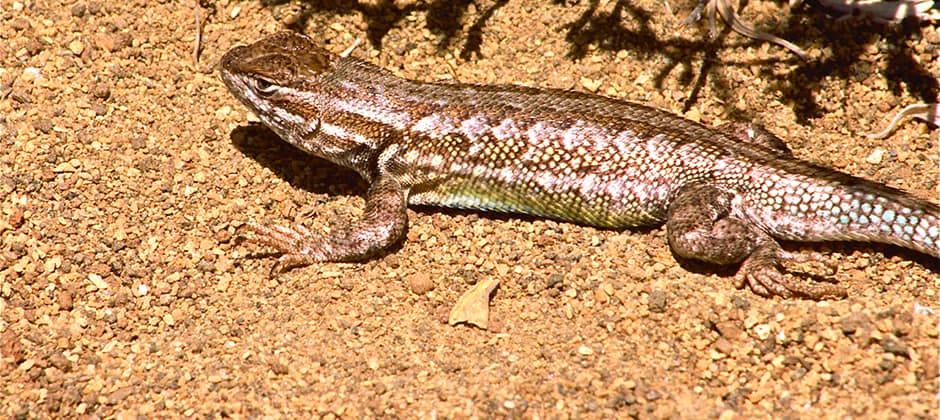Share this article
JWM: Reptiles may benefit under grouse conservation umbrella
Conservation measures aimed at improving sagebrush environments for sage-grouse are also benefitting native reptile species.
“There’s convincing evidence that this umbrella species concept might work for reptiles quite well,” said David Pilliod, a supervisory research ecologist with the United States Geological Survey and the lead author of a study published recently in the Journal of Wildlife Management.
The Western Association of Fish and Wildlife Agencies was interested in seeing what other species benefited from conservation actions taken to improve habitats for greater sage‐grouse (Centrocercus urophasianus) across its range. Some measures to improve the suitability of habitats for this bird include cutting back juniper trees and pinyon pines, removing invasive plants like cheatgrass and seeding areas for sagebrush recovery after fires.
In this study, WAFWA funded Pilliod and his co-authors to determine secondary effects of these measures on reptiles.
After mapping the distributions of 190 reptile species, the researchers found dozens of reptiles with distributions overlapping those of sage-grouse. They narrowed this list down to 22 species that shared a meaningful proportion of their ranges with the birds.

A striped whipsnake appears in Owyhee County, Idaho. ©John Cossel Jr.
After examining scientific reports and literature, they discovered that there wasn’t much information about these reptiles in relation to wildlife or habitat management. “They tend to get overlooked, but they are really important components of shrubland and grassland ecosystems as both predator and prey,” Pilliod said.
The information they found suggested that a number of species might benefit from sage-grouse conservation measures. The reptile that’s distribution overlapped most with sage-grouse — the pygmy short‐horned lizard (Phrynosoma douglasii) — seemed to be the most likely to benefit from sagebrush conservation.
But another 11 lizard and snake species whose distributions overlapped with sage-grouse also likely benefitted from sagebrush conservation. Some of those species include the northern rubber boa (Charina bottae), greater short‐horned lizard (Phrynosoma hernandesi) and striped whipsnake (Coluber taeniatus).

Pygmy short-horned lizards may benefit the most from sagebrush conservation.
©Alan St. John
Whipsnakes, Pilliod said, are particularly well-suited to native shrublands free of cheatgrass and other invasive plants. “They are also a species with populations declining in parts the range,” he added.
There were some nuances to this information, Pilliod said. The common sagebrush lizard (Sceloporus graciosus) and common side‐blotched lizard (Uta stansburiana) are associated with sagebrush, for example, but are also found in juniper areas, despite their name. “They aren’t totally dependent on sagebrush,” he said. “But removal of pinyon and juniper woodlands is likely to also benefit these species, because they really thrive in shrubland habitats, especially where the interspaces between shrubs are sandy and not choked with invasive annual grasses.”
Pilliod said that while species such as the western fence lizard (Sceloporus occidentalis) may lose habitat when juniper shrubs are removed, “there is likely to be a net benefit to both sage-grouse and most reptiles from these types of management actions.”
This article features research that was published in a TWS peer-reviewed journal. Individual online access to all TWS journal articles is a benefit of membership. Join TWS now to read the latest in wildlife research.
Header Image: A sagebrush lizard appears in central Oregon. ©Alan St. John








